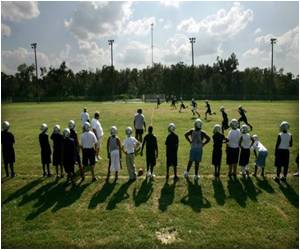The Centers for Disease Control and Prevention has referred to sports-related concussions as an 'epidemic.'

Anthony P. Kontos, PhD, and colleagues from the University of Pittsburgh and Cornell University studied 468 participants, 8-12 years of age, from 4 youth tackle football leagues, consisting of 18 teams. Player exposures were recorded for both games and practices. There were 11,338 total player exposures during the study period, with 20 medically-diagnosed concussions involving 20 different participants; 2 concussions occurred during practice and 18 occurred during games. Players aged 11-12 years were almost 3 times more likely to have a concussion than players aged 8-10 years. The majority of concussions involved helmet-to-helmet contact, and 95% involved players in skilled positions (e.g., running back, quarterback, linebacker). The incidence rate during games was approximately 2 times higher than previously reported, whereas the practice rate was comparable or even lower than previous findings. Overall, players were 26 times more likely to suffer a concussion in a game than in practice.
In the US, approximately 3 million youth participate in tackle football. In light of concerns regarding concussions, Pop Warner, the largest organized league with 425,000 participants, recently limited contact practice time to reduce concussions. However, contact practice time is when proper tackling technique can be taught and reinforced in a controlled environment. According to Dr. Kontos, "Limiting contact practice in youth football may not only have little effect on reducing concussions, but may instead actually increase the incidence of concussions in games via reduced time learning proper tackling in practice." A better approach to reducing concussions in youth football may be to focus on awareness and education among youth football administrators, coaches, parents, and players.
Source-Eurekalert










